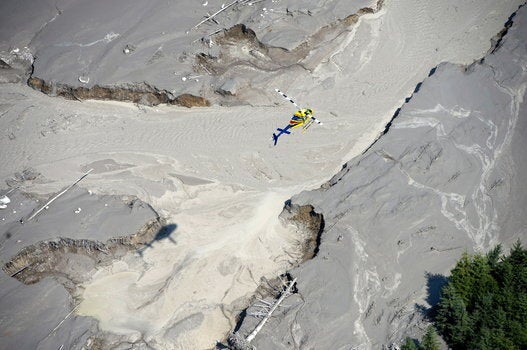It's been three years since the disaster at the Mount Polley Mine near Williams Lake changed everything for the T'exelc, Xat'sull and other First Nations in the region. When the earthen dam of Imperial Metals' tailings storage facility burst in the wee hours of August 4, 26-million cubic metres of toxic sludge and slurry spilled out and ran down into Quesnel Lake, home to one quarter of the Fraser River's sockeye population.

To this day people do not trust the water quality of the lake they used to drink from, and expensive water filters clog up within days.
It's stunning to think that three years later, those toxic tailings have not been cleaned up — there are still tons of solids lining Hazeltine Creek, and lying on the bottom of Quesnel Lake.
There have been several investigations and review panels, but to date no one has been held responsible. The B.C. Conservation Office just announced that their three-year investigation will not be completed by Friday's deadline, so no charges will be laid under provincial legislation. Private prosecution was brought forward by MiningWatch Canada, but was quashed when the crown prosecutor argued for a stay of proceedings, and the judge refused to hear evidence that harm had been caused to fish habitat. The final hope for justice rests with the ongoing federal investigation.
The independent review panel which examined the aftermath of Mount Polley declared the disaster meant the end of "business as usual." Yet within months, Mount Polley was allowed to resume operations at half capacity — before the tailings dam was even repaired.
According to a January 2015 independent report examining the tailings storage facility breach, the cause of the breach was a layer of glacial mud underneath the dam, which was not detected by the engineers who designed it. The breached dam has been repaired, right on top of that mud layer, and the mine has now been allowed to resume full operations, despite the fact that the mud layer problem was never fixed.
One reason the dam failed was that Imperial Metals was unable to manage excess water inside the dam. Instead of a "beach" of solid tailings up against the inside of the dam, water pooled up there, which was a contributing factor in the breach. To solve Imperial's ongoing water management challenge, this spring the Liberal B.C. government quietly granted permission to discharge contaminated waste water directly into pristine Quesnel Lake. Clearly, no one really meant that bit about "the end of business as usual."
It is interesting to note that Murray Edwards is one of the major owners of Imperial Metals. On the eve of the 2013 B.C. election, Edwards organized a fundraiser in Calgary for the B.C. Liberals, raising $1 million. The Liberals went on to win an election which no one thought they could win. British Columbia is the only jurisdiction in Canada where political fundraisers can be held out-of-province.
Many people are counting on the new government to take action to clean up B.C.'s mining industry.
Mining produces both benefits and costs for the province. No doubt the well-paying jobs are important, especially in rural communities. But profits flow mainly to the one per cent, who as often as not move their money offshore rather than contribute their fair share to government coffers (Mr. Edwards recently moved to England — perhaps to avoid paying taxes in Canada.)
The rest of us are left with the cost of cleanup — $40 million and counting at Mount Polley. Currently British Columbia has the largest unsecured environmental liability for mine site clean-up costs in Canada, estimated in 2016 at $1.27 billion.
The true cost of mining is borne by the First Nations whose cultures have been shaped for millennia by the lands, waters and wildlife. No one understands better the need for a healthy environment.
Just this spring a call was made for a judicial inquiry into mining practices. The need for reform of mining regulations in British Columbia was highlighted in January when Bev Sellars, chair of First Nations Women Advocating Responsible Mining, was able to stake a mineral claim on former minister Bill Bennett's backyard by paying $25 and clicking a mouse.
Many people are counting on the new government to take action to clean up B.C.'s mining industry. With Imperial Metals considering two mines in the Clayoquot Sound UNESCO Biosphere Reserve despite opposition from Tla-o-qui-aht and Ahousaht First Nations, we'll be watching closely.
Dan Lewis is executive director of Clayoquot Action in Tofino, British Columbia.
Follow HuffPost Canada Blogs on Facebook
Also on HuffPost:
